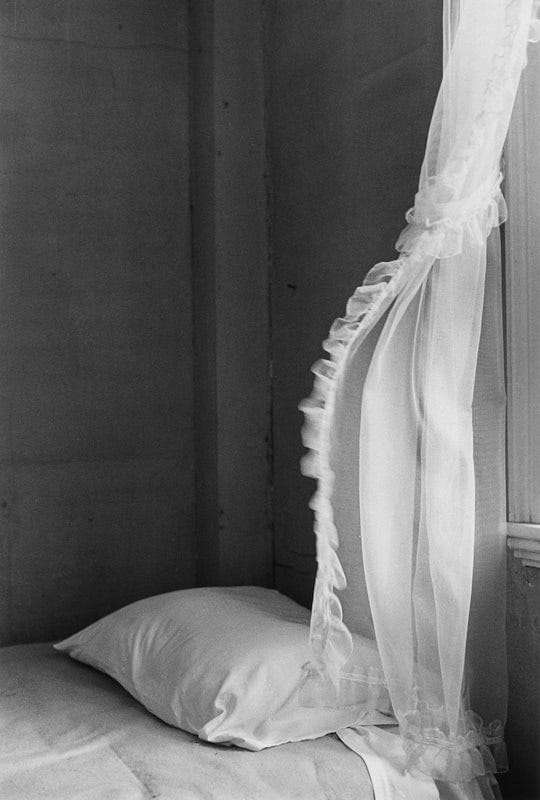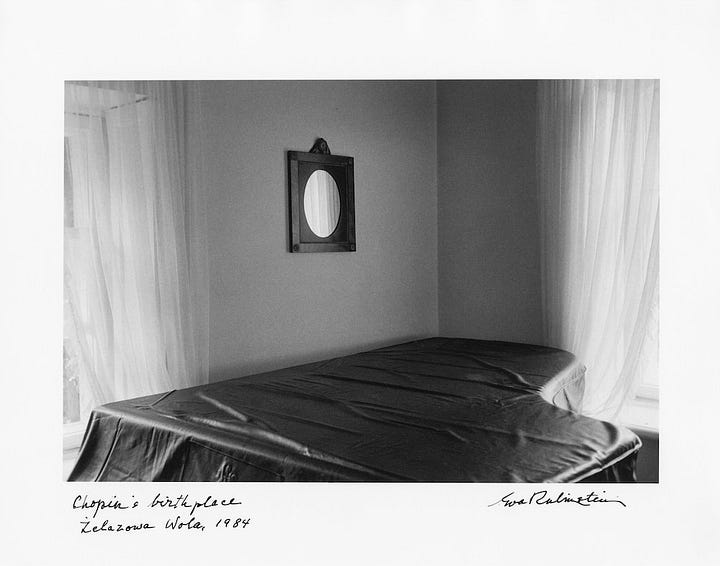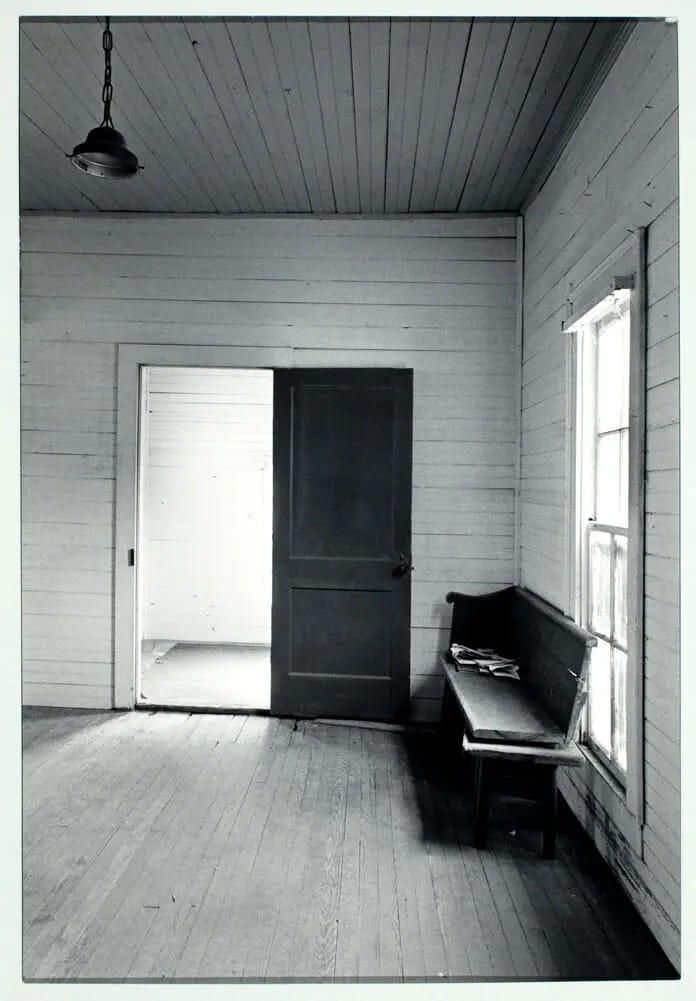

During our recent podcast episode, I explored Eva Rubinstein's photos, feeling a strong connection to how she shows private and intimate spaces. This time, it wasn't her portraits or nudes that grabbed my attention, but the empty rooms she photographed—each one filled with a strong sense of history and hidden emotions. Rubinstein has a special skill in making viewers feel like they can sense the people who might have lived, or will live, in these spaces even though they're not there.
I first became aware of Rubinstein’s work when I saw it on a recent Facebook post featuring some of her photos of empty spaces. The solitude and dream-like quality of her pictures struck me right away. They weren't just photos of rooms; they were full of unspoken stories, with every detail carefully arranged to hint at tales without actually telling them.
On the podcast, I talked about how Rubinstein’s way of taking photos might show her background and training, which includes learning from photographers like Diane Arbus, Lisette Model and Sean Kernan. This background makes her work rich, turning her images into visual stories told through the play of light and shadows.
I also discovered Vilhelm Hammershøi's work quite by chance, when I encountered his writings on grief and loss. Not knowing who he was at the time, my further investigation revealed his stunningly photorealistic paintings. Like Rubinstein's photos, Hammershøi's paintings show quiet rooms known for their calm and minimal look. I quickly linked Rubinstein’s and Hammershøi’s styles together, as both artists create a powerful, quiet energy with their smart use of light and shadows.
Hammershøi often painted simple home scenes filled with a gentle, scattered, ambient light, similar to the mood Rubinstein creates in her photos. His paintings give off a deep, complex silence, pulling the viewer into a thoughtful space where time seems to stop.




What draws me to both Rubinstein's and Hammershøi's works is their focus on being subtle. They share important messages through simple setups. Their art shows us that there's a lot of power in quietness, and the deepest messages often come from the gentlest sounds.


Their talent in showing the feeling of being alone and the detailed effects of light in empty rooms encourages us to look closer and feel more deeply. Every piece of art by Rubinstein and Hammershøi is like a visual poem, where every part—the way light falls, the reach of a shadow, the lack or inclusion of people—is a line filled with meaning.


In this busy world filled with constant noise and images, the works of Rubinstein and Hammershøi give us a peaceful visual break. They remind us of the deep beauty and importance found in simplicity and quietude, in the calm moments that we often ignore.









That's a lovely image of the unmade bed in the mirror. I look forward to discovering more of her work.
That photo with the white curtain billowing out into the room and over the chair in the living/sitting room is so good - I can feel a fresh spring/summer breeze filling that room with a quiet vibrance!